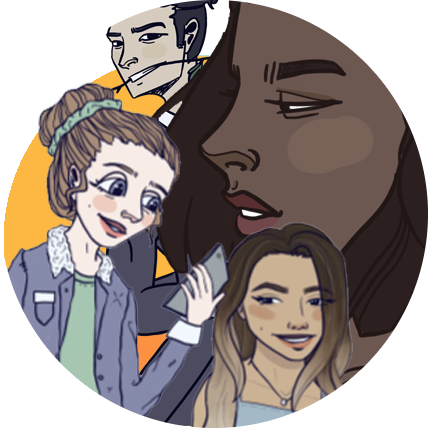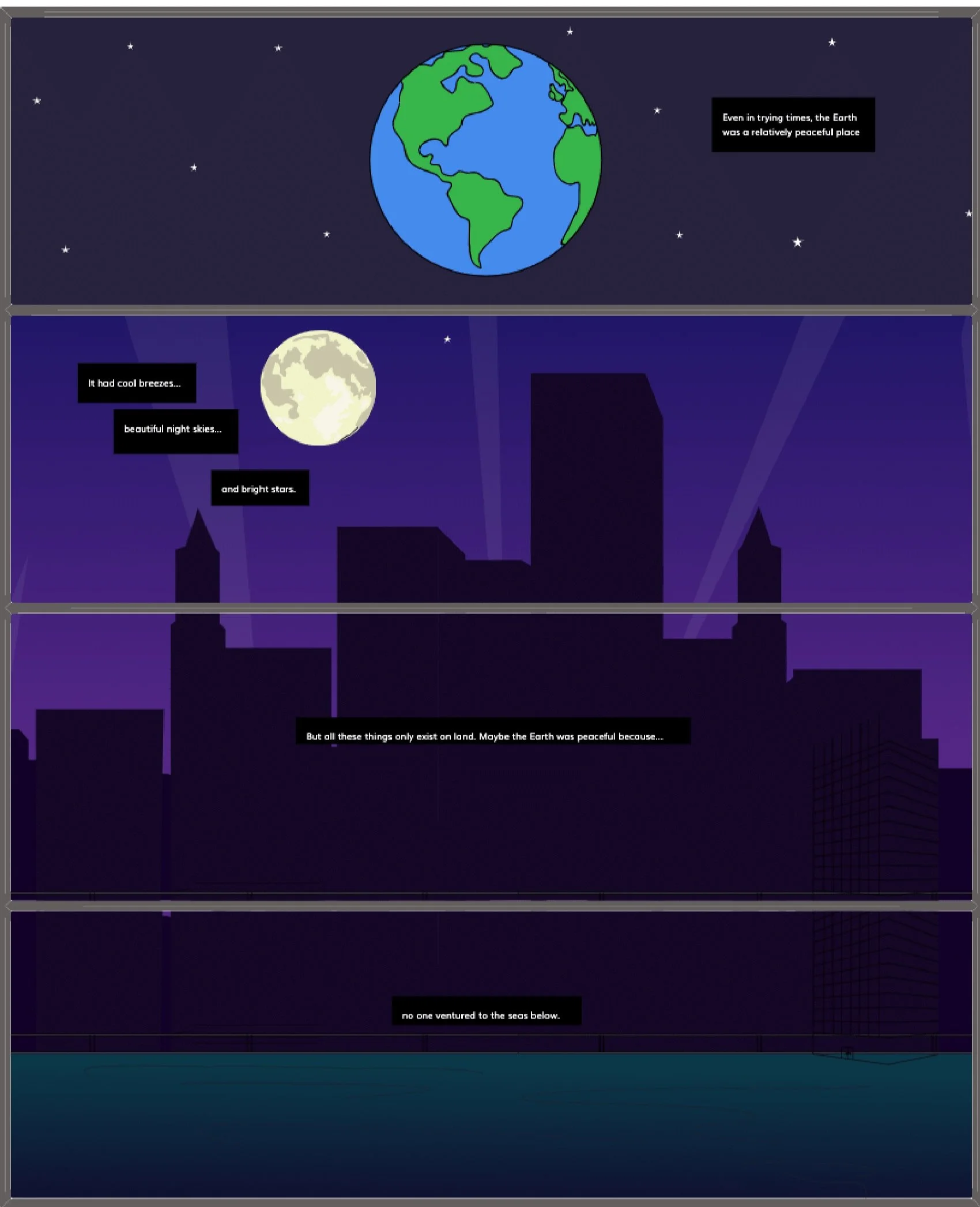Story Structure: 7 Elements of a Story
Every great story has thrilling plot twists, exciting characters, and descriptions that paint visuals of the world in the reader's mind. But the number 1 thing you must do before writing your story is understand the elements of story structure.
Creating a successful story starts with structure. Why? Because story structure helps you organize the events of the story and create a flow for the reader to follow.
So what are the elements? Check them out below and use the jump to section to navigate to them throughout the blog.
Jumpt To Section:
When you can create a story that touches upon all of these story structure elements, you are much more likely to create a thrilling story that your reader can’t put down.
Elements of story structure: Setting
Setting in a story refers to the world, environment, or scene where your story takes place..
Some setting elements to consider include time, place and environment. Whether your setting is a made up fantasy world on a different planet, or a modern contemporary world that mimics earth - your setting needs to be described to your readers so they can visualize the world in which your story takes place.
It's also important because your setting could have a direct effect on your characters, and the plot so understanding your setting and how it relates to your characters is crucial to storytelling,
We already discusses the importance of place (the world in which your story takes place) but also understanding WHEN it takes place and the environmental elements is important for creating a cohesive world for your reader,
Does your story take place in the past, present or future? Are there elements of the environment you need to consider including extreme conditions (droughts, floods, ice age) that play a role in your story or affect your plot?
Make sure to answer these questions to create a cohesive setting for your story.
🔥HOT TIP🔥 If your story includes imagery like a graphic novel or comic book, make sure the images you include are intentional and help display the tone and setting of your story.
→Darker images can suggest nighttime
→Skyscrapers suggest city landscape
→Parks and trees portray suburban settings
Elements of story structure: Characters
To create characters that resonate and connect with readers you need to develop a backstory for them that depicts their traits, personality, and gives reasoning to why they are the way that they are.
Character development is an in-depth process that helps you map out how your character develops in your story. Taking them from point A (who they were before) to point B (who they are now transformed).
You also need to consider who else will be in your story. Do you have supporting characters, are there animals, monsters, or other creatures in your story that play a role in your plot? Understanding who will make an appearance in your story before you begin writing will help you better create context for those characters’ introduction into the story.
You also need to determine who the protagonist and antagonist is in your story. Typically, every story has a leading character and a character that challenges the protagonist. Creating character avatars before writing your story will give your characters greater depth and help your readers become more invested in them.
Elements of story structure: Plot
Every great story has a great plot! A plot in storytelling refers to the events inside the story. Typically, something happens that interrupts the reality of the main character and they must now go out of their norm to find a resolution to the interruption. Your story will follow your main character as they figure out how to solve this problem.
There are a few important parts to a plot that you must consider.
Exposition: The backstory to your setting and characters. Usually told at the beginning of your story so that readers can make sense of your world. (For an in-depth guide on how to set up your exposition, check out our latest article on how to worldbuild!)
Action: The interruption in your story that forces your character to take action.
Climax: The turning point for your character:
Resolution: Your character finds a solution to their problem (we’ll discuss more about this soon!)
Conclusion: what changes in your characters world or how are they transformed.
Elements of story structure: Conflict
The conflict in storytelling refers to the disturbance in the plot that forces the main character to face an internal or external conflict. It doesn’t matter if you’re writing a drama, comedy, fantasy, romance, or action novel - every successful story includes some kind of conflict.
Internal conflicts refers to the character struggling with their own opposing thoughts, desires, or beliefs and external conflict refers to an outside element that threatens the character.
When a story centers around a character with internal conflict, it usually involves the character having to go through a series of developments within themselves to find peace resolution.. If your story centers around an external conflict then your character must overcome a roadblock, enemy, or element to restore order,
Knowing what conflict your character is struggling with will help you structure your story accordingly.
Elements of story structure: Resolution
Resolution stands for the conclusion or restoration of the norm in your character or your character's world, Your resolution is the end result of your story.
You must also consider what the purpose of your story was all about.What do you want the end of your story to be about? Will your story end with happiness and a resolution, or will it end with tragedy and continued conflict?
Knowing your story's resolution will help you when writing your plot and structuring your story to end with that resolution in mind. Another element to consider when figuring out your resolution is thinking about your readers.
What do you want them to take away from your story? Every great story ends with a powerful impression. Depending on what you want your readers to take away from your story, make sure your resolution makes sense to your main point or theme of your story. Speaking of themes, let's tackle that element next!
🔥HOT TIP🔥 Need help with your resolution? Here are a few different types and suggestions on when to use them!
Ending With a Twist: When you want to surprise your readers! Often used in thrillers and mysteries but can be used in any genre.
Happily Ever After Ending: Just as it sounds, this ending will bring the story full circle, all issues resolved, and answers all questions. Use for stand alone stories, Young Adult, to to end a series.
Elements of story structure: Theme
A theme is a central part of your story and should be at the forefront of your plot. A well written story will have a central theme woven throughout the story's structure and your readers should be able to pinpoint your theme or the meaning of your story at the end of or conclusion of your novel.
When thinking about your stories central theme, ask yourself these questions:
What is the main purpose of my story?
What is the BIG idea I want my readers to take away from it?
How will my theme connect to the main character?
How will my character be affected by this theme?
Some popular themes you will see in stories include good vs. evil, courage, bravery, love, overcoming adversity, greed, revenge, redemption, coming of age.
Depending on what you want your story to be about, make sure to weave in your theme so that it makes sense to your character development, conflicts, and resolution
⚡️ACTION STEP ⚡️How to determine story theme? Use these questions to help you identify your story's main theme.
Lesson: What does your story teach?
Moral: What values are apparent?
Message: How can a reader apply the story to their life?
Motif: What are the recurring patterns?
Elements of story structure: Point of view
The last element you need to consider is determining how your story will be told. There are two points of view that are common in storytelling.
First person point of view is when a character within your story narrates the story. This means you will know the character's thoughts, feelings, and understand what is happening from their unique point of view.
Third person point of view is when your story is told by a narrator that exists outside the story. There are three types of third person point of views you must also think about if you;re taking this approach.
Third person Omniscient: This means your narrator will know everything about the story and the characters, understanding their thoughts and emotion.
Third person limited omniscient: This means your narrator will know only one character's thoughts.
Third person objective: This means your narrator does not know ANY character's thoughts.
So, what point of view should you use for your story? Take a look at the HOT TIP below
🔥HOT TIP🔥
Use a first person point of view if you want your reader to immediately know your narrator's thoughts and emotions. Typically used when your narrator is the main character.
Use a third person point of view when you want to limit your readers' understanding, information, or perspective on the story and have them figuring things out as the story unravels.
Last thoughts on story structure
There is a lot of thought that goes into writing a successful story. Hopefully this breakdown on all the story structure elements helps you better understand what to focus on when writing your own story and how to structure it with purpose!
Remember to have fun and play with different themes, plots, and characters. It should be a fun process that is not forced but that unravels naturally. And if you need help worldbuilding when writing your story - check out our latest article https://www.storyspread.com/blog/how-to-worldbuild.
Hi, Welcome to Storyspread.com!
Comic creation made simple. Create graphic novels with a single click. Add character, backgrounds, and more.
Easy to use. Say goodbye to searching far & wide for an expensive illustrator.
Tell your story. Join other creatives, readers, and hobbyist in producing high quality & beautiful comics
Read. Read other’s comics for FREE and share with others
Grow. Grow an audience you love with the stories YOU imagined
Were you can create a comic and graphic novel WITHOUT drawing. Simple and easy! Made for all skill levels. Click-n-drag comic book characters, scences into panels.
Create a comic just like this! Here.





